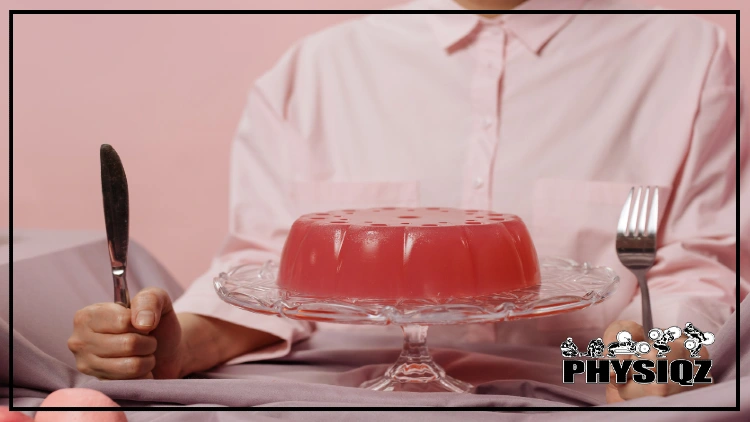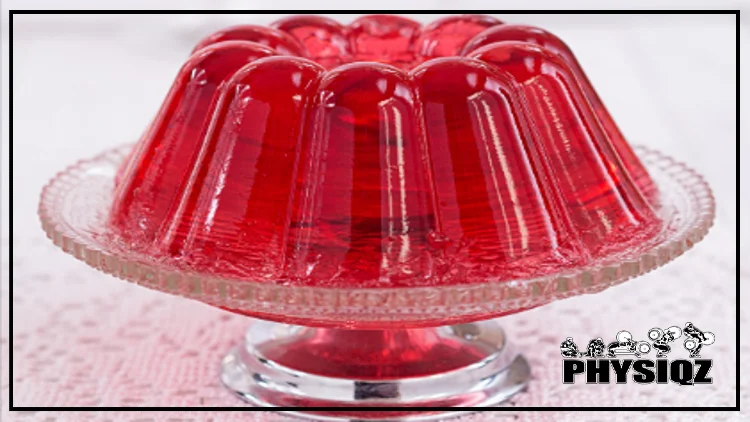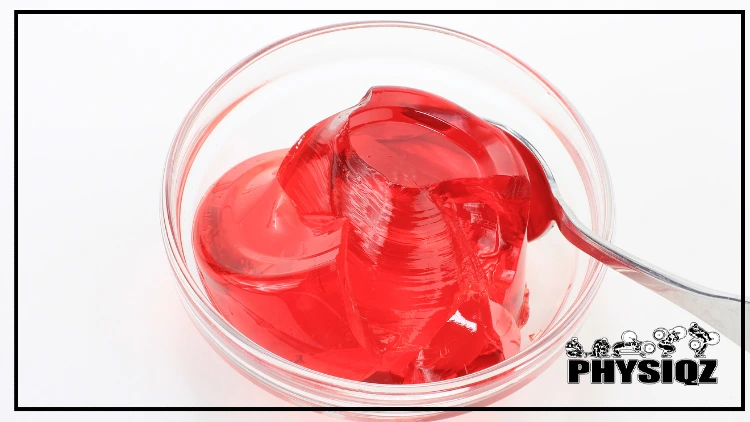
Figuring out the amount of carbs in sugar free Jello and pudding also can prove tricky with so many serving sizes and flavors available so carbs of every flavor need to be examined.1 On top of this, some hear the term Jello or pudding and automatically think junk food – and while they’re far from the healthiest options – the calorie contents and amount of carbs are actually quite low in the sugar free options.
While many people would believe there is no way food can check all these boxes, sugar free Jello can actually be worked into most diets – keto or not.
Is Sugar Free Jello Keto Friendly?
Sugar free Jello is a delicious snack and is often thought of as great food for weight loss. As a low-calorie alternative to many other desserts, it is a wonderful way to satisfy a dieter’s sweet tooth without ruining their diet. However, the question about the carbohydrate count in sugar free Jello remains.
Sugar free Jello fans can relax because the amount of carbohydrates is 0 grams per serving! That’s right, it’s a tasty treat with no carbs to worry about. So, at zero carbs, a sugar free jello is keto friendly!
How Many Carbs Are In a Sugar Free Jello Cup?
A box of Jello that is sugar free commonly comes in an easy to cook packet and usually makes four half cup servings of the delicious treat.
When it comes to the amount of carbs in sugar free Jello, the exact nutritional content might vary from flavor to flavor, but calories for sugar free Jello come to 10 calories per serving and 0 grams of carbs for the boxes of powder that are made at home.

Source: Edith64 via Canva.com2
Alternatively, sugar free Jello cups come ready to eat straight out of the package and the small cups provide a diet friendly snack on the go and are perfect for a busy dieter to incorporate into everyday life.
Similar to the sugar free Jello packets, name brand sugar free Jello cups average 10 calories and 0 grams of carbs per serving, and also come in half cup sized portions. If you’re considering alternatives, Raymundo’s sugar free Jello cups are even less calories, at a minuscule 5 calories per serving and 0 grams of carbs!
Carbs In Sugar Free Jello vs Regular Jello + Fat & Protein
Sugar free Jello and regular Jello, while both delicious, have a number of nutritional differences that are important to understand as a dieter.
Luckily for dieters, the amount of fat in both sugar free Jello and standard Jello is 0 grams per serving.
Jello is not a protein dense food. Sugar free and regular Jello both provide only 1 gram of protein per serving so due to Jello’s lack of protein, dieters can substitute this important nutrient with protein shakes. To maximize the many benefits protein provides, it’s important to know the right time to drink protein shakes.
Carb wise, sugar free Jello has 0 grams of carbs per serving and regular Jello , on the other hand, has an astounding 17 grams of carbohydrates per serving! Sixteen grams of which are added sugars.
Along with being low in fat, calories, and carbohydrates, sugar free Jello includes small quantities of vital minerals such as calcium, iron, phosphorus, potassium, and sodium.3
How Many Carbs Are in a Sugar Free Jello Pudding?
Now that we know the amount of carbs in sugar free Jello, it’s worth noting Jello and pudding are not created equally so as a result, they have different amounts of carbohydrates.
In comparison to sugar free Jello’s 0 grams of carbs per serving, sugar free jello ranges between 5 and 7 grams depending on the various flavors available. This number is still better than the regular Jello and Jello pudding options, making it a decent option for dieters wanting to lose weight.
How Many Calories in a Sugar-Free Jello?
Sugar free Jello comes in a wide variety of flavors and some of the most popular flavors include strawberry, black cherry, lime, lemon, cherry, peach, raspberry, and orange. As promised, here are the carbs for every flavor (and pudding too!).
They all contain 10 calories per serving size, as well as 0 grams of carbohydrates.
Sugar free Jello pudding comes in many delicious flavors much like their Jello counterparts, such as vanilla, chocolate, banana creme, and cheesecake to name a few. Unlike their Jello counterparts, the Jello brand pudding contains a higher caloric content.
Vanilla has 20 calories per serving, chocolate has 30 calories per serving, and banana crème and cheesecake both have 25 calories per serving.
Not too bad for such a tasty treat!
How Many Calories in a Sugar Free Jello Cup?
Sugar free Jello cups are a great way to enjoy Jello in moderation and as mentioned, these yummy treats come in a snack size portion and can be eaten on the go thanks to its individual wrapping.
Lucky for dieters, sugar free Jello cups run at 10 calories per serving, making it a very low-calorie option.
Is Sugar Free Jello Good for Weight Loss?
When it comes to the amount of carbs in sugar free Jello in relation to weight loss, Jello fans can rejoice because it’s also low in calories and allows dieters to enjoy a sweet treat without ruining their diet. It is actually good for weight loss.
To understand how this tasty treat can be a dieter’s best friend, it’s important to know the basics of how weight loss works and explore effective weight loss solutions. Weight loss boils down to the number of calories that are eaten and burned. Simply put, calories in and calories out (or CICO for short).

Source: Warren_Price via Canva.com4
If someone is trying to lose weight, then the process requires burning more calories than consuming them. This is otherwise known as eating at a caloric deficit. Alternatively, if someone consumes more calories than they burn, then they will gain weight.
To boost the number of calories burned, strive to be more active every day. A great way to do this is to target 10,000 steps per day, engage in cardio, try lifting weights, or even go to a workout class. If you don’t have the time or energy to incorporate these strategies, don’t worry! You can still create a calorie deficit without exercise!
When it comes to counting calories, the best place to start is to calculate how many calories are burned per day. There are many great online calculators available to help count calories by inputting a number of important factors that play a role.
Alternatively, a standard person that is active can multiply their weight by the number 15 to get a general idea of how many calories they burn in a day.5
Sugar free Jello is an extremely low-calorie food, so it contributes very little to a dieter’s overall net calories (otherwise known as the total number of calories that someone has consumed). This helps them to stay below their caloric goals and ensure they are burning more calories than they eat throughout the day.
Finally, and perhaps most beneficial for the sugar tooths of the world, sugar-free Jello can help a dieter who is struggling with bad cravings for something sweet to eat. It provides the sweetness that many other delectable desserts have, but without all the calories, sugars, and carbohydrates attached.
This satisfies the craving for something sweet and prevents dieters from looking elsewhere for scrumptious satisfaction. Dieters get to have their cake (or in this case Jello) and eat it too!
Regular Jello, though slightly higher in calories than its sugar-free counterpart, remains a low-calorie option compared to many other desserts. Remember to be mindful about the increase in carbs if partaking in this tasty treat, especially if going keto!
While Jello is a good choice to help dieters lose weight, it is important to note that Jello and sugar free Jello is not the healthiest options. Remember, a healthy lifestyle is NOT all about weight loss.
Why Jello Isn’t the Healthiest Dessert
While the amount of carbs in sugar free Jello is zero, sugar free Jello is a tasty yet diet friendly dessert alternative that like many other desserts, it should only be eaten in moderation. While the snack is technically low in calories and carbohydrates, it’s not the healthiest dessert out there but it still has its place for those who have a sweet tooth.
Nutrients
First, sugar free Jello is low in vital nutrients. This means that the food is lacking in important vitamins and minerals that the body needs to function and be healthy. So while it might taste delicious, it doesn’t provide the body with the critical nutrients that it actually needs. It doesn’t really add any benefit, at least in terms of health and nutrition.
Artificial Sweeteners (Carbs in a Sugar Free Jello With Splenda)
Second, sugar free Jello has quite a few additives that are not great in terms of health. Most concerns may be the fake sugar products known as artificial sweeteners used for intense sweetness without the increase of calories and carbohydrates. On paper, this seems like a great idea! But unfortunately, the body is much more complicated.
Artificial sweeteners have been used for decades. However, as research continues to investigate these additives, more and more health concerns are being raised. Evidence suggests that artificial sweeteners may have adverse effects on metabolism and weight gain.6
Sugar free Jello specifically uses Acesulfame K and Aspartame; both are popular sweeteners used in many processed foods. The former has been linked in mice studies to weight gain and changes in the gut microbiome, which are micro- and macro-organisms living in the digestive tracts of animals and people that aid in digestion.7
Research of the latter, Aspartame, suggests a link between the product and increased cancer risk in rodent subjects, although links in human studies have been inconsistent.8 With this information in mind, it is best to limit the number of foods with artificial sweeteners in them.
Dyes
Along with artificial sweeteners, sugar free Jello uses artificial coloring additives to make its food more appealing to the eye. The dyes used may vary from flavor to flavor, but as a general consensus, artificial dyes are an unnecessary additive and not always conducive to health.
Concerns include food allergies to specific dyes, as well as possible adverse effects on child behaviors, specifically on activity and sustained attention.9
Sodium
Finally, the treat is surprisingly high in sodium, at 55 milligrams per serving. Sodium is a compound that is necessary for the body to function, but too much can have adverse health effects.
Commonly found in salt, sodium causes fluid retention and, as a result, increases blood pressure. If a dieter often has low blood pressure, additional sodium is not a serious concern and can be beneficial in some scenarios.
However, in people with already high blood pressure (also known as hypertension), sodium can increase their blood pressure to dangerous amounts. This increases the risk of stroke, chronic kidney disease, and cardiovascular disease that can lead to heart failure or heart attacks.10
Sweet Treat Options Instead of Sugar Free Jello

Photo by Any Lane on Pexels11
Fruit
Fruit is likely to be the healthiest alternative to sugar free Jello. It’s packed with fibers to assist with digestion, and important nutrients and vitamins essential for the body to function. Not only is it nutritious, but it’s delicious too!
Popsicles
Popsicles are a tasty treat, especially in the summer to help beat the heat. They tend to be low in calories, and a healthy alternative to other desserts on the market such as sugar free Jello. Look for items made with real fruit ingredients to ensure the best possible nutrition. Or better yet, try making them at home by blending up delicious fresh fruit with water, milk (or milk alternatives), or fresh juice.
Greek Yogurt
Dieters tend to focus on low-calorie, low-sugar, and low-fat options. As a result, protein can get neglected. Protein is a vital macronutrient that is responsible for a number of important bodily functions. It helps to repair the body and is essential for building and maintaining muscle. This is precisely why greek yogurt is such a wonderful alternative to many dessert options, including sugar free Jello. It is a great source of protein for dieters and comes in a wide array of delicious flavors.
Sugar free Jello is a tasty treat to help aid dieters with their weight loss goals. So next time a craving for something sweet hits, grab a cup and enjoy! Stay guilt free by keeping in mind the amount of carbs in sugar free Jello: zero!
References
1cottonbro studio. “Free stock photo of anonymous, breakfast, cake stand, cakestand, contemporary, cutlery, delicious, dessert, diet, dining, dinner, eat, elegant, family, female, food, formal, gourmet, health, hungry, indoors, jello, jelly, knife, love images, lunch, luxury,.” Pexels. Accessed 12 April 2023. <https://www.pexels.com/photo/food-man-love-woman-6550725/>
2Edith64. “Red Jello.” Canva. Accessed 12 April 2023. <https://www.canva.com/photos/MADCDTVS1X4-red-jello/>
3University of Rochester Medical Center. 2022. Nutrition Facts. Encyclopedia. Retrieved on 15 September 2022. Web. <https://www.urmc.rochester.edu/encyclopedia/content.aspx?contenttypeid=76&contentid=19290-1>
4Warren_Price. “Strawberry Jello.” Canva. Accessed 12 April 2023. <https://www.canva.com/photos/MAC_xNVDcY8-strawberry-jello/>
5Harvard Health Publishing Harvard Medical School. 11 July 2020. Calorie Counting Made Easy. Staying Healthy. Retrieved on 15 September 2022. Web. <https://www.health.harvard.edu/staying-healthy/calorie-counting-made-easy>
6Pearlman, M., Obert, J., & Casey, L. (2017). The Association Between Artificial Sweeteners and Obesity. Current gastroenterology reports, 19(12), 64. <https://doi.org/10.1007/s11894-017-0602-9>
7Bian, X., Chi, L., Gao, B., Tu, P., Ru, H., & Lu, K. (2017). The artificial sweetener acesulfame potassium affects the gut microbiome and body weight gain in CD-1 mice. PloS one, 12(6), e0178426. <https://doi.org/10.1371/journal.pone.0178426>
8Debras, C., Chazelas, E., Srour, B., Druesne-Pecollo, N., Esseddik, Y., Szabo de Edelenyi, F., Agaësse, C., De Sa, A., Lutchia, R., Gigandet, S., Huybrechts, I., Julia, C., Kesse-Guyot, E., Allès, B., Andreeva, V. A., Galan, P., Hercberg, S., Deschasaux-Tanguy, M., & Touvier, M. (2022). Artificial sweeteners and cancer risk: Results from the NutriNet-Santé population-based cohort study. PLoS medicine, 19(3), e1003950. <https://doi.org/10.1371/journal.pmed.1003950>
9Arnold, L. E., Lofthouse, N., & Hurt, E. (2012). Artificial food colors and attention-deficit/hyperactivity symptoms: conclusions to dye for. Neurotherapeutics : the journal of the American Society for Experimental NeuroTherapeutics, 9(3), 599–609. <https://doi.org/10.1007/s13311-012-0133-x>
10Patel, Y., & Joseph, J. (2020). Sodium Intake and Heart Failure. International journal of molecular sciences, 21(24), 9474. <https://doi.org/10.3390/ijms21249474>